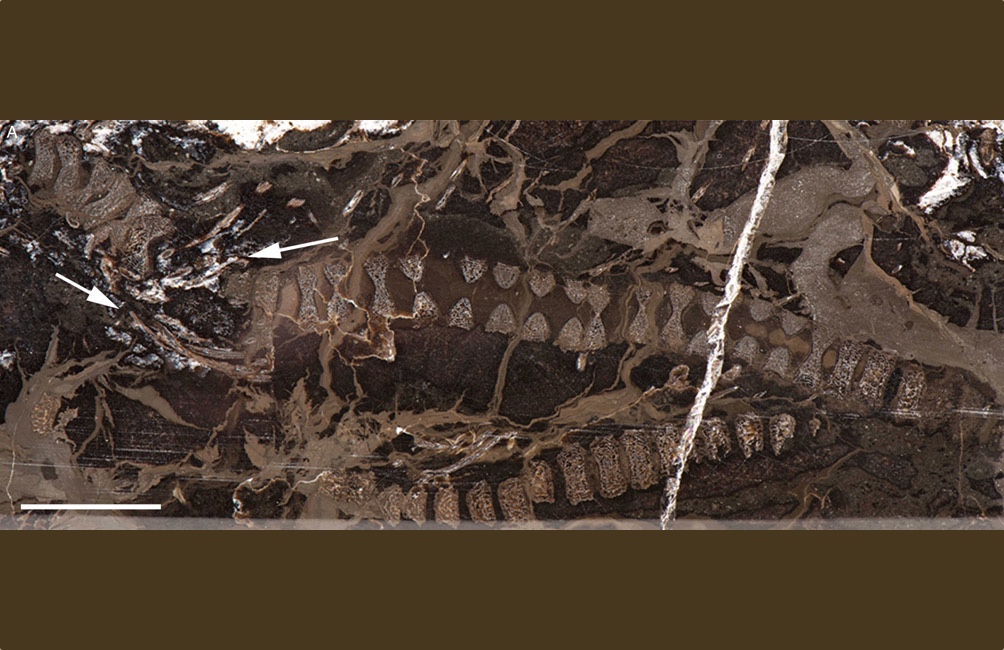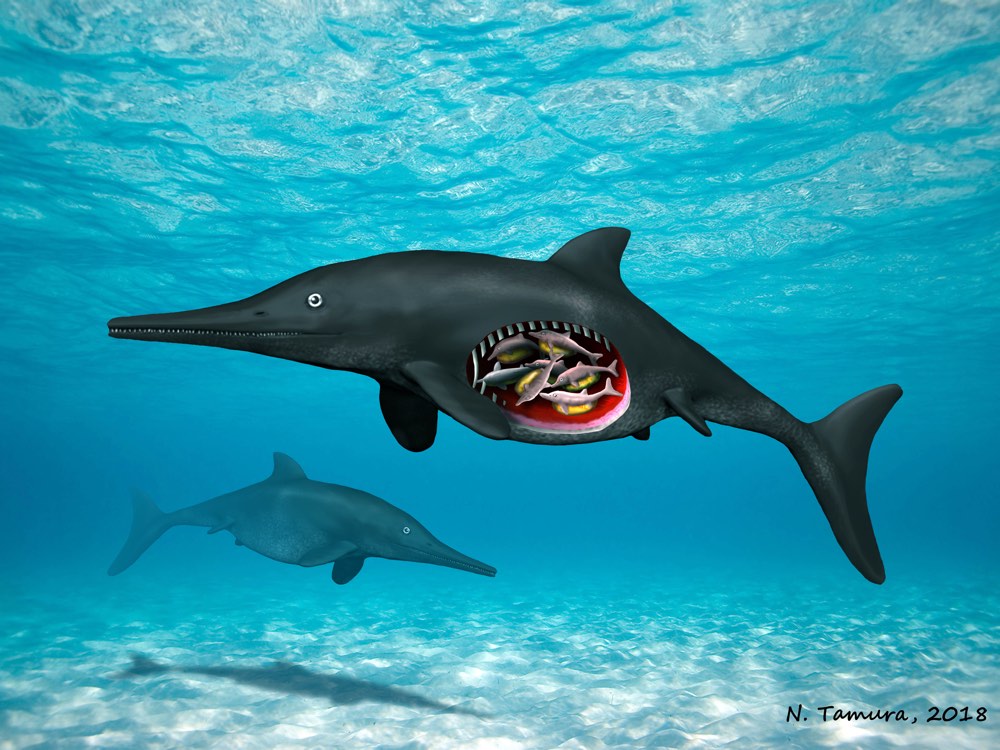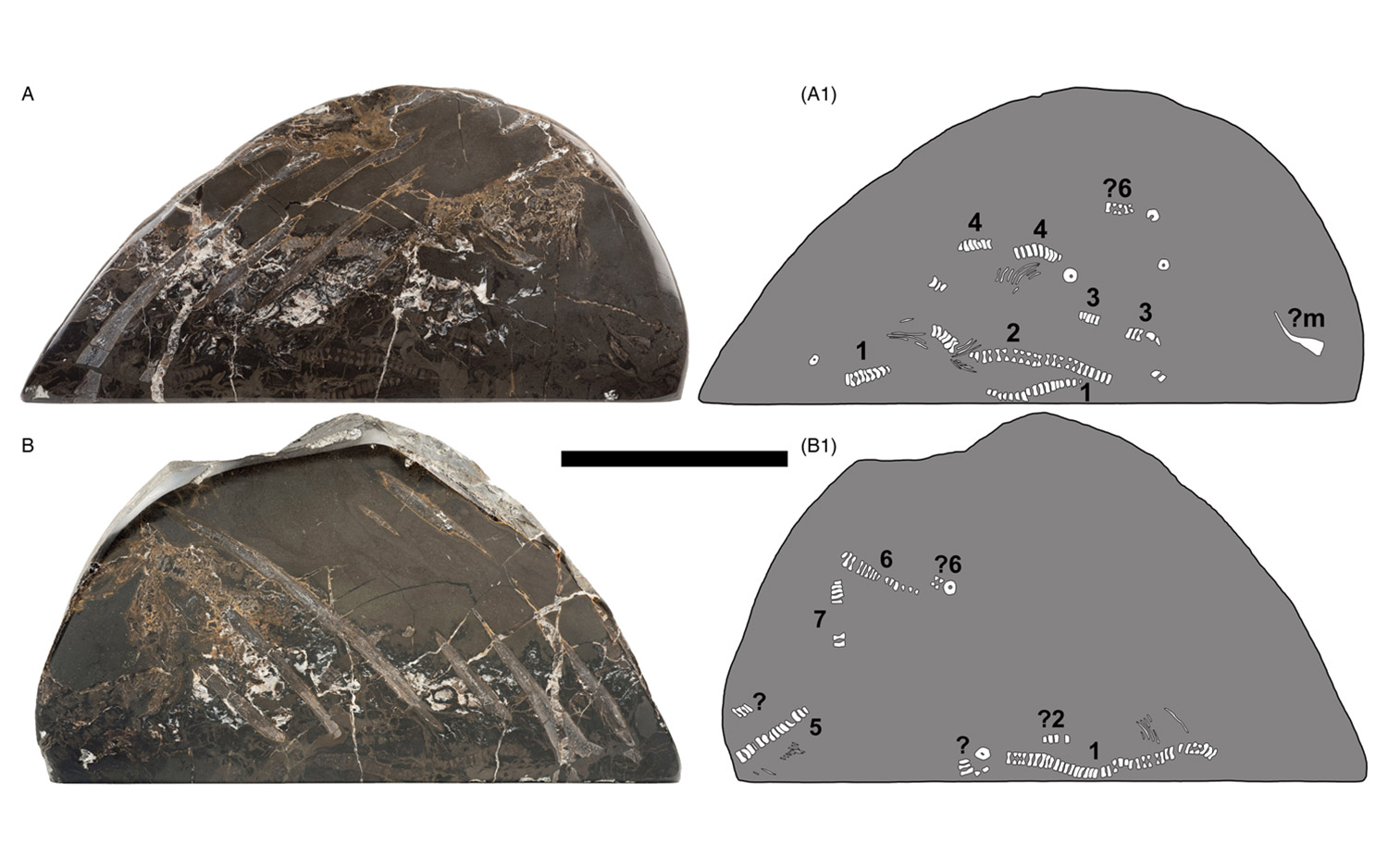This Prehistoric Sea Monster Was About to Be an Octomom

An ichthyosaur that lived 180 million years ago had quite a brood — a passel of up to eight embryos tucked into her abdomen.
A new fossil of this prehistoric mama-to-be was discovered in North Yorkshire, England, in 2010. It was in the private trove of fossil collector Martin Rigby until recently, when Rigby asked University of Manchester paleontologists Mike Boyd and Dean Lomax to examine the specimen.
"This is an incredible find, and the research by Dean and Mike has helped us confirm it is the first example of fossilized ichthyosaur embryos to be found in Yorkshire," Sarah King, the curator of natural science at the Yorkshire Museum, which now owns the fossil, said in a statement. [Image Gallery: Ancient Monsters of the Sea]
Ichthyosaurs were aquatic reptiles that lived alongside the dinosaurs during the Jurassic period. They breathed air, but gave birth to live young underwater. Paleontologists have previously found fossils of pregnant ichthyosaurs, including one that died while in labor.

The new specimen is a cut, polished boulder that reveals adult ichthyosaur ribs and a cluster of tiny bones. Boyd and Lomax analyzed the fossil, considering the possibility that they were looking at the ichthyosaur's stomach contents. But the bones weren't eroded by stomach acids, Boyd said in the statement, and they contained no remains of squid or other common ichthyosaur prey. Besides, Boyd added, it would be odd for an ichthyosaur to somehow swallow a cluster of newborn ichthyosaurs all at once.
More likely, the researchers reported in the Proceedings of the Yorkshire Geological Society, the bones are the fetal remains of the adult ichthyosaur's young. There were at least six unborn ichthyosaurs in the mother's abdomen, the researchers found, but more likely eight.

The fossil is the first example of marine reptile embryos discovered in Yorkshire. Researchers can't be sure of the precise species of the animal, Lomax said in the statement, but ichthyosaurs of the genus Stenopterygius are most commonly found with fossilized embryos. These ichthyosaurs, whose fossils are found in what is today Europe, could grow up to 13 feet (4 meters) in length.
Sign up for the Live Science daily newsletter now
Get the world’s most fascinating discoveries delivered straight to your inbox.
The specimen is now on display in the Yorkshire Museum's Jurassic World exhibit, which uses digital technology to reveal the embryos, King said.
The find "allows us to show a softer and more nurturing side to the 'Sea Dragons,' which were the top marine predator of their time," King said.
Original article on Live Science.

Stephanie Pappas is a contributing writer for Live Science, covering topics ranging from geoscience to archaeology to the human brain and behavior. She was previously a senior writer for Live Science but is now a freelancer based in Denver, Colorado, and regularly contributes to Scientific American and The Monitor, the monthly magazine of the American Psychological Association. Stephanie received a bachelor's degree in psychology from the University of South Carolina and a graduate certificate in science communication from the University of California, Santa Cruz.










